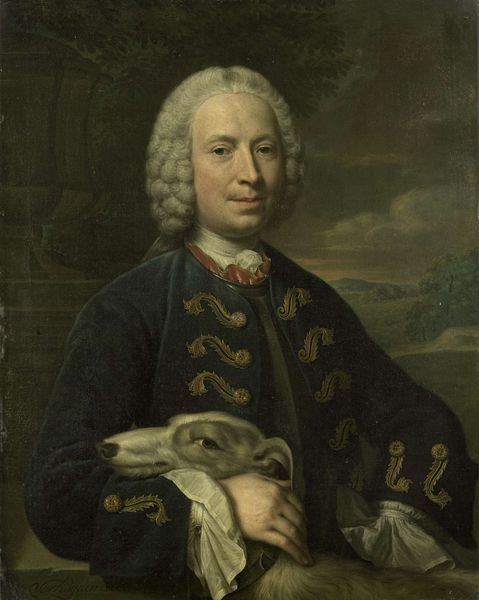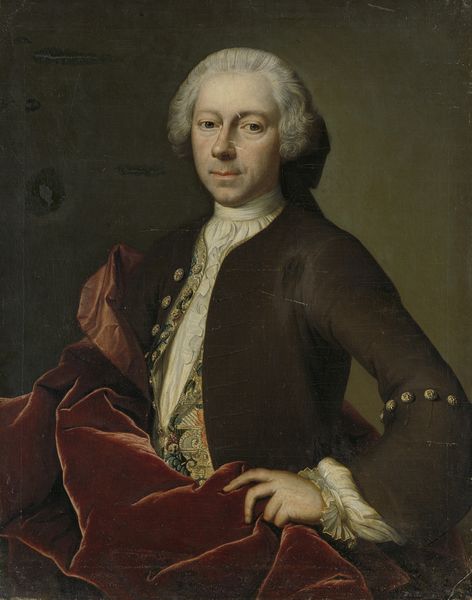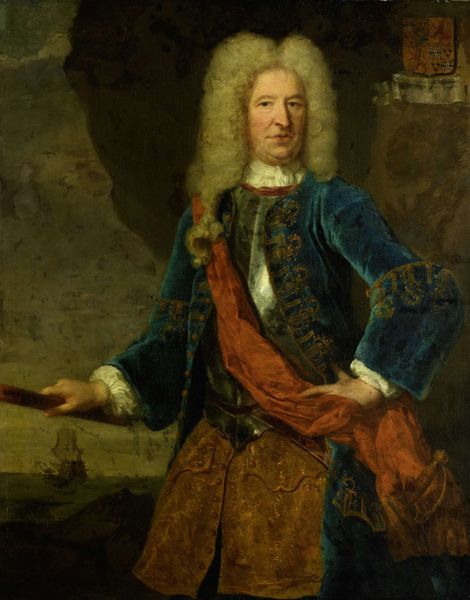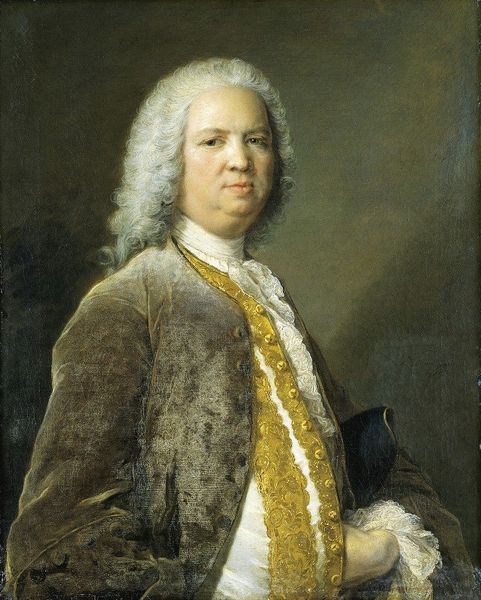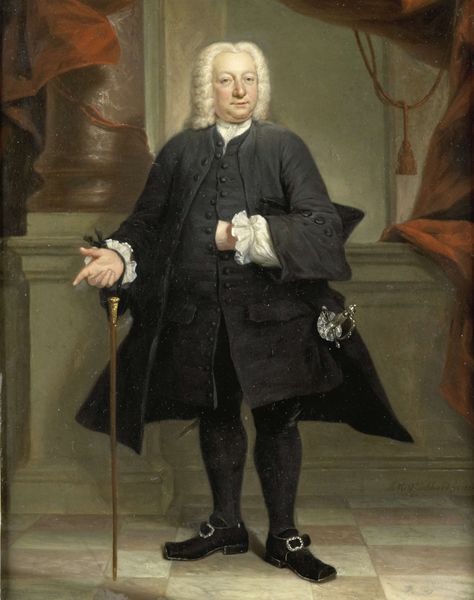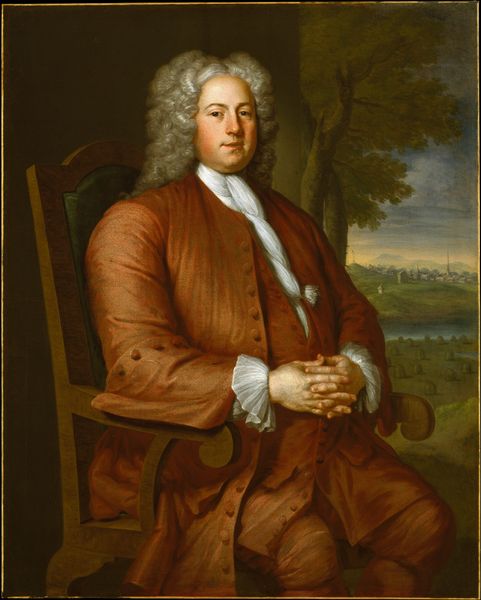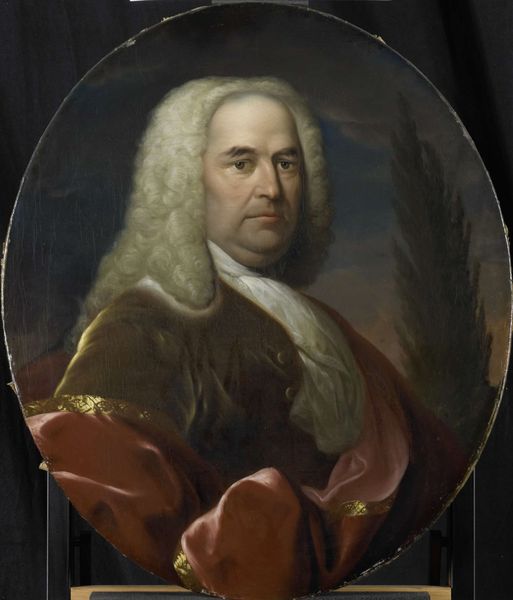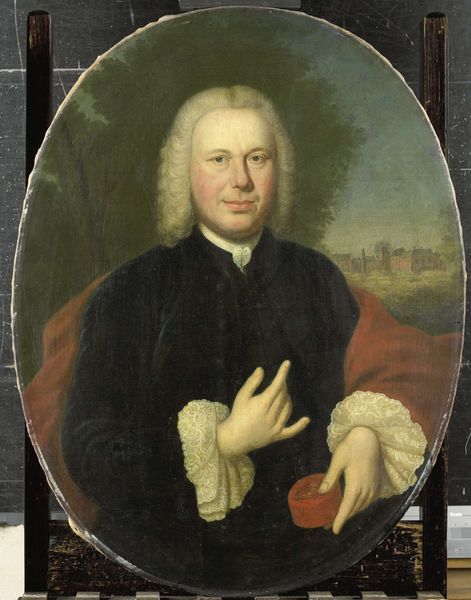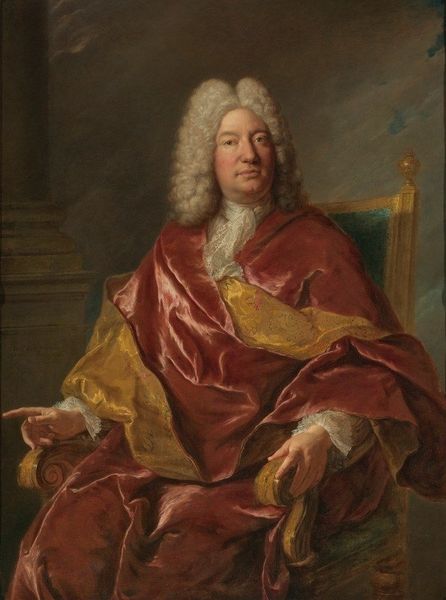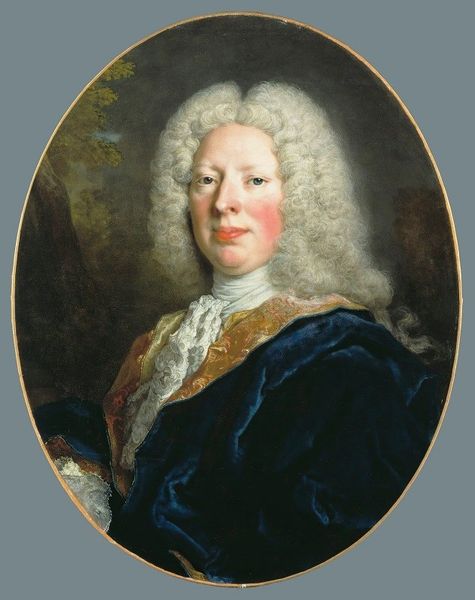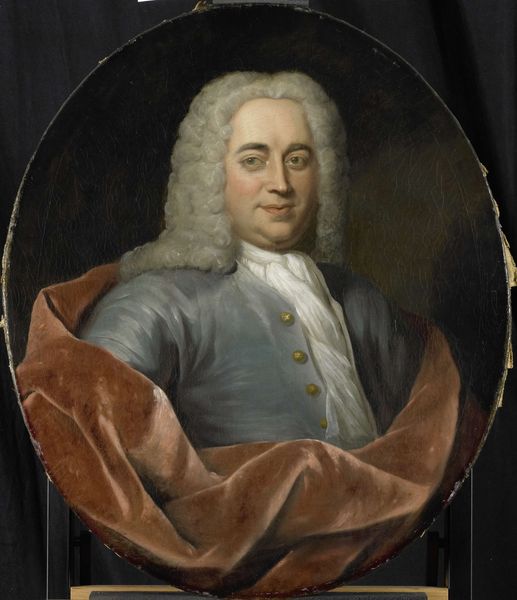
painting, oil-paint
#
portrait
#
baroque
#
painting
#
oil-paint
Dimensions: 127 x 101.6 cm
Copyright: Public domain
Curator: Before us is Joseph Wright of Derby’s “William Brooke,” an oil painting from approximately 1760. The work is a prime example of the Baroque portrait tradition. Editor: He appears so comfortable, doesn't he? There is a definite calmness in the composition, despite the deep contrasts between the textures. Curator: Indeed. Notice how Wright uses the interplay of light and shadow, particularly across the face and the folds of fabric, to model form. He manipulates the fall of light from left to right. This highlights his command over painterly techniques that mimic the naturalistic rendering of material qualities. Editor: Look at the way light glistens off the fabric of the sitter's brown velvet jacket. I wonder what daily life was like for artisans producing velvet of that quality and how accessible this fabric was? A book is a symbol for class and literacy, yet there is such labor involved in manufacturing these elements! Curator: These objects, placed so carefully in the painting, symbolize erudition and refined tastes. This staging elevates him beyond a mere physical representation and engages broader ideas of societal place and knowledge. His book and apparel underscore class and achievement as significant features within his persona. Editor: And there is something interesting about the contrast of materials, as the crisp lace trimming the shirt peeks from beneath the dark velvet. Wright so carefully draws our attention to that textile quality. It evokes notions of craftsmanship inherent in fashion design and material consumption that still exist today. Curator: Considering Wright of Derby's interest in science and the enlightenment, it is tempting to see in this portrait not only a record of the sitter's likeness but a statement on reason and cultivation that the era cherished. His placement alongside the book, his enlightened gaze—these create powerful signification. Editor: Reflecting on the composition, I'm now more appreciative of how Wright's manipulation of fabrics connects high society's consumption habits with those of artisan craft. Curator: Absolutely, it prompts further investigation. The Baroque elements speak to themes of order and status in a time of rapidly shifting intellectual ideas.
Comments
No comments
Be the first to comment and join the conversation on the ultimate creative platform.
